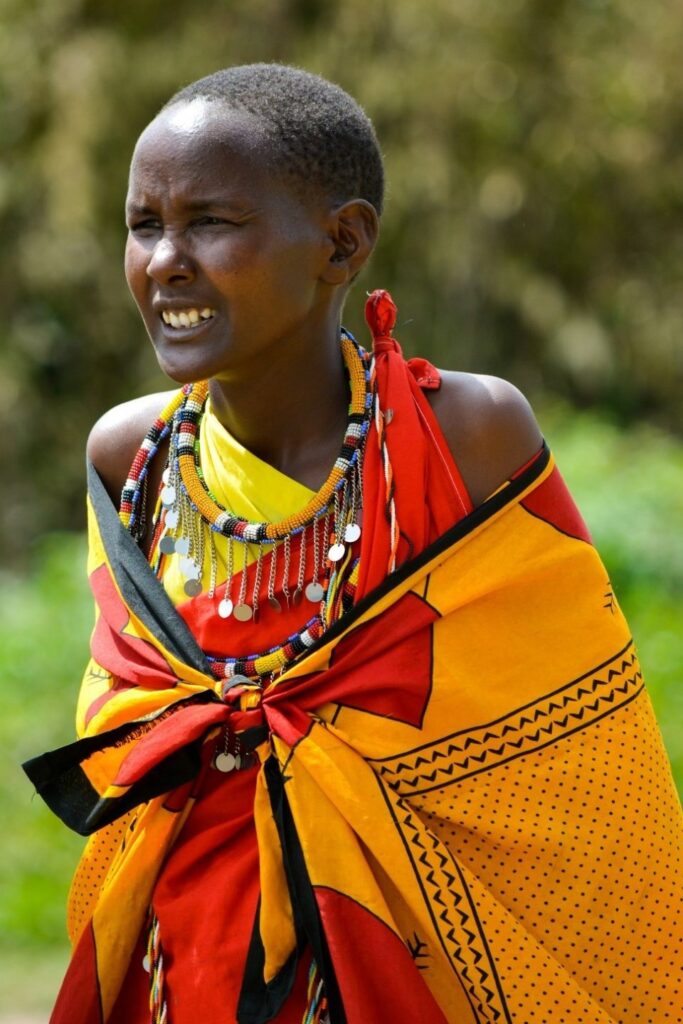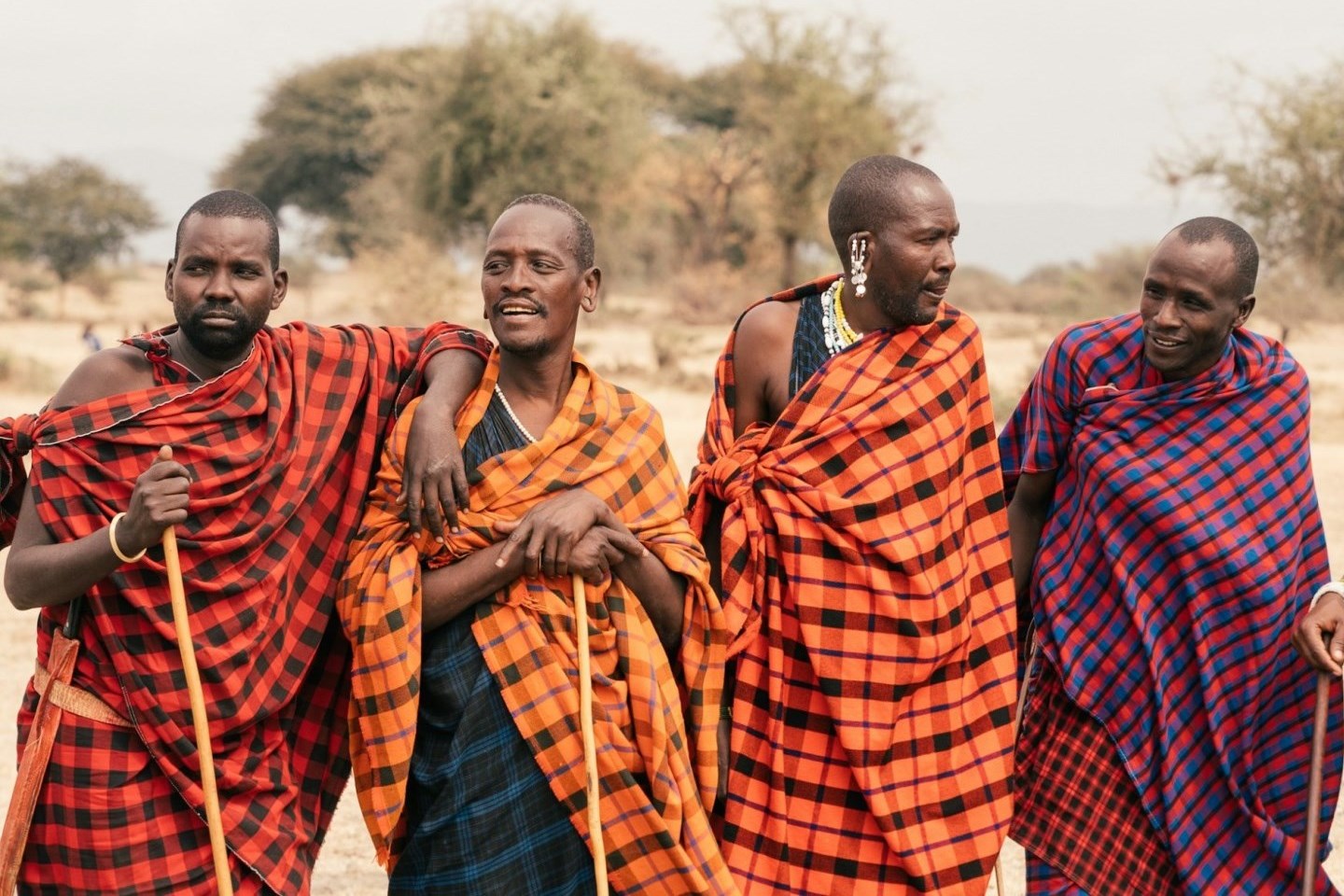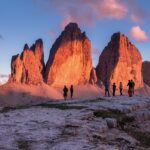Ultra Luxury Journeys in Eastern & Central Africa
The Maasai
- Maasai Mara National Reserve, Kenya


The Life of a Maasai - Best Kept Cultural Secrets
The Iconic Maasai Community...
The Maasai community are a nomadic pastoralist’s Nilotic ethnic group inhabiting northern, central and southern Kenya and northern Tanzania of East Africa. Maasai are nomadic pastoralists living in of East Africa. Maasai is essentially a linguistic term, referring to speakers of this Eastern Sudanic language (usually called Maa) of the Nilo-Saharan language family.
For centuries, the Maasai have remained fully nomadic, wandering in bands throughout the year and subsisting almost entirely on the meat, blood, and milk of their herds. Their kraal, consisting of a large circular thorn bush fence around a ring of mud-dung houses, holds four to eight families and their herds.
The Maasai have a number of patrilineal clans grouped into two classes, or moieties. The basic institution of social integration, however, is the system of age-sets. Under this system, groups of the same age are initiated (circumcised) into adult life during the same open-initiation period; the age-class thus formed is a permanent grouping, lasting the life of its members.
They move up through a hierarchy of grades, each lasting approximately 15 years, including those of junior warriors, senior warriors, and junior elders, until they become senior elders authorized to make decisions for the tribe.
Between the ages of about 14 and 30, young men are traditionally known as morans. During this life stage, they live in isolation in the bush, learning tribal customs and developing strength, courage, and endurance. The traits for which Maasai warriors are noted for throughout the world.
A ritual expert (oloiboni) who, although he has no political power, is religious head of his people directs ceremonial events.
The Maasai's Origin and Migration
The Maasai were originally a Nilo-Saharan people centered on the area of what is today Sudan. They then migrated southwards, along with other Bantu tribes like the Tutsi, searching for better grazing and farming lands, a quest which eventually took them into central East Africa around 1750 CE.
The migration took them through the highlands of Kenya and past Lake Turkana, finally settling on the savannah grass plains of what is today southern Kenya and northern Tanzania. The Nilotic-Kushite origins of the Maasai are evident in their physical characteristics and the many instances of words borrowed from Kushite or Eastern Nilotic languages present in the Maasai or Maa language.
For ages, the Maasai developed an oral tradition, which reinforced their own view that they were the only pure pastoralists in East Africa. Sustaining their lives with ease in the irregular rainfall of the inland zones of Kenya and Tanzania had meant that the Maasai were obliged to focus on stock-raising, especially of cattle, and abandon the cultivation of grain in some areas.
Other animals herded on a much smaller scale included goats and sheep. Livestock provided milk, blood to drink, dung for fuel and house construction, material for weapons, tools and clothing, and, occasionally, meat as their main diet.
The Maasai continued to expand their domain, which is sometimes called Maasailand and is approximately located in the area between Lake Victoria in the East and Mount Kilimanjaro in the west, by sending out younger generations of families to settle new pastures with a certain quantity of the home community’s livestock.
Luxury Safaris Par Excellence
The Maasai - Society, Culture & Wealth

For a very long time, Maasai status in their society was determined and measured by how many cattle a male owned. Livestock was an indicator of prosperity and animals were commonly offered as part of a bride price, but the Maasai did sometimes lend their cattle to relatives in difficulties, too. In a certain sense, cattle held communities together by providing a common and mutually beneficial bond of ownership. Specific members of kin group’s herded animals, but the whole belonged to the wider social unit irrespective of their actual geographical spread.
In times of drought when milk was in short supply or animals even died, those with only a small herd were forced to farm or hunt for themselves, which as we have seen above, was regarded as the ultimate failure. Warriors lived together in separated clusters of dwellings, ate in each other’s presence, shared property and always travelled together.
All Maasai individuals belonged to a family, clan, and district group. Representatives of these groups formed councils of male elders – seniority in age was an important criterion for the Maasai elite – which met regularly to discuss and decide matters important to the Maasai as a whole and establish the rights and mutual obligations of each of these three levels of society. Elite groups typically ended up controlling the best grazing land and the vital watering places. Youths were permitted into adulthood through initiation ceremonies, which involved circumcision (for both sexes).
Prosperous groups of Maasai were able to permit some individuals to pursue other activities such as basketry, textile work, religion, and art. Another task could be housebuilding, traditionally regarded as a woman’s responsibility along with the household chores and childcare, while men tended the animals.
Trade with other tribes permitted the acquisition of such necessities as grain, vegetables, and other foodstuffs produced by agriculturalist tribes (notably the Kikuyu), salt, iron, weapons, tools, and luxury goods such as well-made pottery and decorative items for the body and home. Interestingly, trade was the responsibility of Maasai women.
The Maasai paid for these goods in the form of cattle, milk, skins, and leather. Another area of exchange was expertise, with the pastoralists performing minor surgeries and tooth extractions in return for the agriculturalist’s knowledge of medicines.
Maasai - The Sustainable Tourism Icons...
Amazing Cultural Encounters...
Arguably, the Maasai is the single most iconic tribe in Africa. The Maasai have their unique nomadic culture and way of life not to mention their traditional dress of red or brightly colored ”shukas” or body drapes.
The Maasai have been under pressure from the Kenyan government to give up their traditional, semi-nomadic lifestyle, and their grazing lands have been eaten into by park boundaries and land privatization, but they have survived through a combination of grit and diversification. They have demanded grazing rights to many of the national parks and have been involved in the ownership and management of private conservancies that border these state-run wildlife parks.
Looking at this opportunity, many Maasai tribal leaders have embraced the commercial possibilities of tourism, by welcoming guests into their villages to learn about traditional Maasai life. In return, this allows the Maasai to continue to preserve their traditions, while also creating revenue for the entire community and equipping their children for better life. As a result, many Maasai still keep herds of cattle, sheep and goats, perform age-old rites of passage, and live off grid in traditional manyattas – a compound of huts built of sticks, cow dung and mud.
Maasai Village Excursions...
Meeting the Maasai people, the custodians of Kenya’s wilderness, beautiful landscapes is one of the major highlights that should not be missed while visiting Kenya, and the Maasai’s involvement in tourism produces enormous benefits. You can visit a Maasai village to experience their culture, traditions and lifestyle. For deeper immersion, you can stay in lodges or camps run by the Maasai themselves, situated on lands known as private conservancies, which are owned by the Maasai and leased to private investors herein, safari companies. Since it’s inception, the conservancies model has proved to provide a guaranteed income to the Maasai landowners as well as employment for young people in the community.
Tips To Know About the Wildebeest Migration
The Africa’s ecosystems of the Maasai Mara and Serengeti National Park on a rotational basis are home to huge herds of wildebeest and zebras migrating in a continuous search for pasture and water respectively. The migration isn’t new to science as the journey is well known to follow a similar annual route, but the exact timing still baffles many wildlife biologists due to the changing rain patterns. Please, read more about the Great Wildebeest Migration in Kenya and Tanzania





Why Book Your Wildebeest Migration Luxury Safari
With Oluokos,
Our guests tend to ask what the perfect Wildebeest Migration Luxury Safari itinerary looks like and to be honest, we don’t have a straight-forward answer.
To answer you in brief, each guest has a unique taste when it comes to enquiring about the wildebeest migration safari and this could be based on personality that’s strongly influenced by expectations. We have given a few good to check itineraries to serve as wildlife migration inspirations.
We don’t offer Wildebeest Migration Safari as a bucket list destination, but a rich wildlife safari experience with diversity, meaningful purpose to travel, cultural mosaic and of course, unmatched habitats that have given room to wildlife migration.
To many, The Great Wildebeest Migration is a living testimony about nature’s resilience, majesty and sustainability. This annual journey, undertaken by over two million wildebeest, zebras, and antelope across the vast plains of Kenya and Tanzania, is a spectacle that captivates guests from all walks of lives. Let Oluokos Signature bring you closer to the ever-unfolding natural spectacle with an exclusive, front-row seat to one of nature’s greatest shows on Earth.
Our African Luxury Trips
Top 10 Best Wildebeest Migration Luxury Safaris By Oluokos
At Oluokos Signature, we recognise that each guest is unique. That’s why our Great Wildebeest Migration Luxury Safari itineraries are carefully tailored to meet your wide taste of an African custom luxury safari.
We factor in the timing of your safari, highlights you wish to see, level of luxury safari adventure you’re comfortable with, and kind of accommodation that suits your preferance.
Whether you’re eager to capture the dramatic river crossings on camera or wish to witness the spectacle from a hot air balloon, Oluokos African custom luxury travel experts will help craft the perfect itinerary for you and your loved ones.
At Oluokos, creating effortless African holiday experiences is our cup of coffee! In Africa, our luxury safaris are packed with transformative moments that resonate deeply with you, fulfilling your holiday dreams and ideals.
"Can Definately Recommend"

Lea K from Denmark
"Amazing!"

Nia Gibson from United Kingdom
"Birding With Oluokos"

Nathan M from USA
"Great Experience at Ruma National Park"

Sarah G from USA
"Once In Lifetime"

Charlotte from United Kingdom
"Best Birding Guide"

Valerie M from USA
"Not Your Regular Safari/Tour Guide.... So Much More!"

Kelly B from USA
Discover Your Next Adventure with
Contact Our Luxury Travel Expert
Our Photos' Credit
- Adarsh Nagda
- Doc. Victor Ikawa
- Laure Dupont Benjamin
- Steve Methu
- Oystein Storkesen
What Our Clients Say About Us
Explore More
{Oluokos Signature}
Typically replies within minutes
Any questions related to African luxury custom safari? #GoBetterWithOluokos! Please, share with us your African custom luxury safari requirement and our luxury safari designers will be delighted to assist you.
WhatsApp Us
Online | Privacy policy






